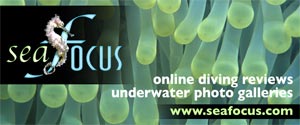- Home
- Directory
- Shop
- Underwater Cameras - Photographic Accessories
- Smartphone Housings
- Sea Scooters
- Hookah Dive Systems
- Underwater Metal Detectors
- Dive Gear
- Dive Accessories
- Diving DVD & Blu-Ray Discs
- Diving Books
- Underwater Drones
- Drones
- Subscriptions - Magazines
- Protective Cases
- Corrective Lenses
- Dive Wear
- Underwater Membership
- Assistive Technology - NDIS
- On Sale
- Underwater Gift Cards
- Underwater Art
- Power Stations
- Underwater Bargain Bin
- Brands
- 10bar
- AirBuddy
- Akona
- AOI
- Apollo
- AquaTech
- Atomic Aquatics
- aunoc
- AxisGo
- Backscatter Underwater Video and Photo
- BLU3
- Buddy-Watcher
- Cayago
- Chasing
- Cinebags
- Contour
- Deepblue
- Devilite
- Digipower
- DJI
- Dyron
- Edge Smart Drive
- Eneloop
- Energizer
- Exotech Innovations
- Fantasea
- FiiK Elektric Skateboards
- Garmin
- Geneinno
- GoPro
- Hagul
- Hoverstar
- Hydro Sapiens
- Hydrotac
- Ikelite
- Indigo Industries
- Inon
- Insta360
- Intova
- Isotta Housings
- Jobe
- JOBY
- Kraken Sports
- LEFEET
- Marelux
- Mirage Dive
- Nautica Seascooters
- Nautilus Lifeline
- NautiSmart
- Nocturnal Lights
- Nokta Makro
- Ocean Guardian
- Oceanic
- Olympus
- OM System
- Overboard
- Paralenz
- PowerDive
- QYSEA
- Ratio Dive Computers
- Scubajet
- Scubalamp
- Sea & Sea
- SeaDoo Seascooter
- SeaLife
- Seashell
- Seavu
- Shark Shield
- Sherwood Scuba
- Spare Air
- StickTite
- StormCase
- Sublue
- Suunto
- SwellPro
- T-HOUSING
- Tusa
- U.N Photographics
- Venture Heat
- XTAR
- Yamaha Seascooter
- Youcan Robot
- Zcifi
New Zealand

New Zealand’s awesome landscapes, lush forests, amazing wildlife and pleasant climate make it a haven for many outdoor activities, and a great place to unwind. New Zealand society is diverse, sophisticated, and multicultural, and the honesty, friendliness, and openness of Kiwis will impress you. And the great advantage of New Zealand is that all of its diverse physical, cultural, and artistic landscapes are so close to each other!
New Zealanders have a unique and dynamic culture, with European, Maori, Pacific and Asian influences. It’s a culture that celebrates the many different lifestyles we live, and the stories we have to tell.
Stunning landscapes, lush vegetation, and unique wildlife make New Zealand a paradise for nature lovers.
Images courtesy of Tourism New Zealand
In the Directory
Photos

- Hero kayaking

- Abel Tasman

- Snowboard yourself out
Climate
The north of New Zealand is subtropical and the south temperate. The warmest months are December, January and February, and the coldest June, July and August. In summer, the average maximum temperature ranges between 20-30 degrees C and in winter between 10-15 degrees C.
Underwater Recommendations
With a long, often indented coastline of almost 18,000km, New Zealand is a diver's paradise. Coastal waters teem with colourful, fascinating sea life and the usually clear waters make for excellent viewing, especially in the prime months from February to June.
Many of New Zealand's prime diving spots are just offshore, offering easy access. One of the best spots is the crystal-clear waters of the Poor Knights Islands Marine Reserve, whose amazing range of fish, including many tropical species, was considered by the late Jacques Cousteau to be one of the world's top five diving locations.
Other popular areas are the sheltered Bay of Islands, four hours drive north of Auckland; and in the South Island, the dramatic fiords of Fiordland, and Stewart Island with its breathtaking kelp forests and huge paua (abalone). Two accessible wrecks on the New Zealand coast also provide special diving opportunities.
Getting There
New Zealand is a three and a half hour flight from Eastern Australia. From the West Coast of the United States, a direct flight to New Zealand is 12 hours. Other places on the Pacific Rim, like Singapore, Hong Kong and Tokyo, flights take around 10 hours.
In the Directory

Shopfront
-
 DSMB (Deployable Surface Marker Buoy)
DSMB (Deployable Surface Marker Buoy)
- Buoy in shape of a safety sausage that can be deployed at depth when combined with a reel or finger spool.
- $AU 69.95
- 5% Cardholder's Discount!
Articles
-
 Southern exposure - Commercial diver training in New Zealand
Southern exposure - Commercial diver training in New Zealand
by Simon
- This article will hopefully be of interest to divers considering a career in commercial diving or wishing to complete a commercial course for other reasons. Hopefully it will give you a bit of an insight into what to expect.









